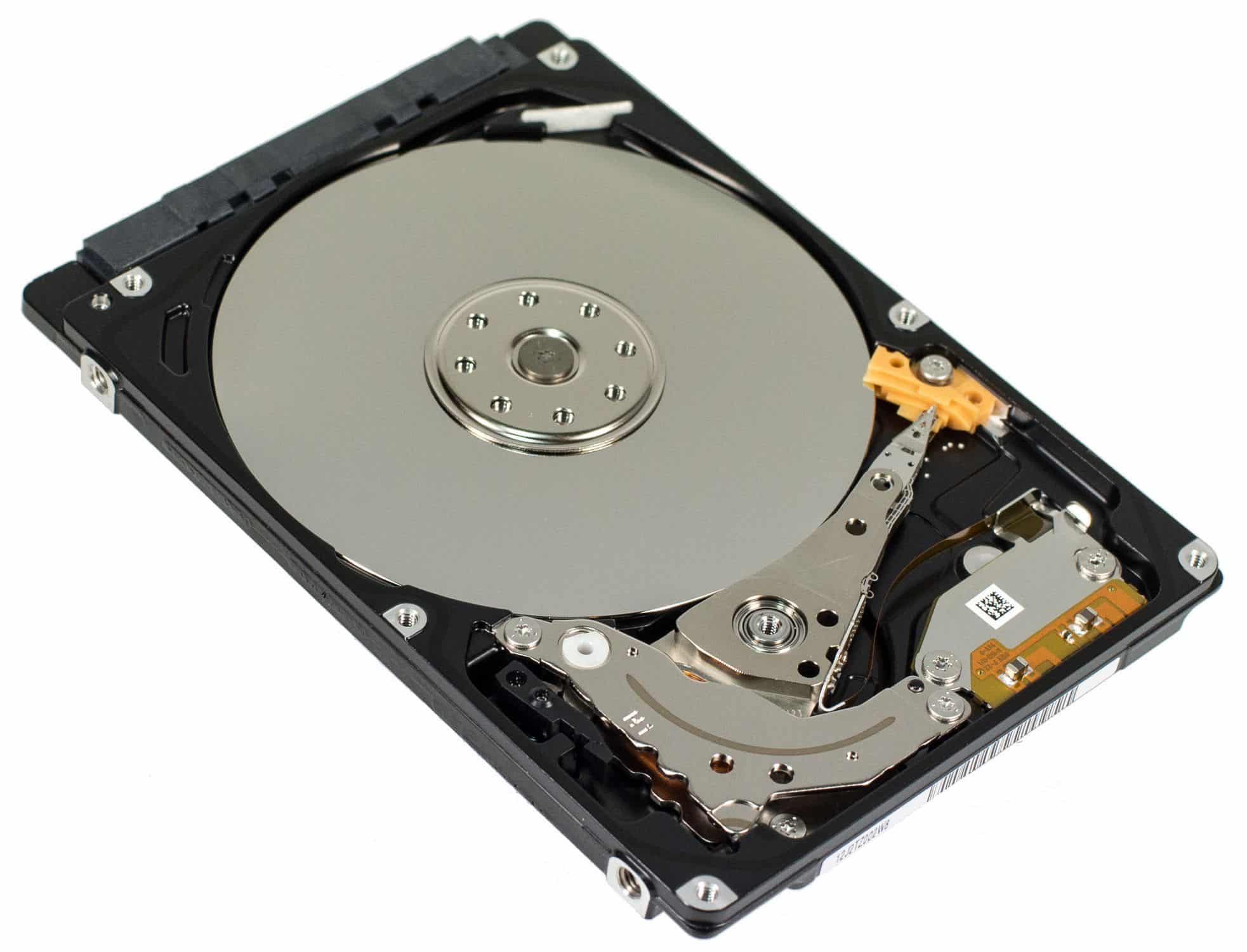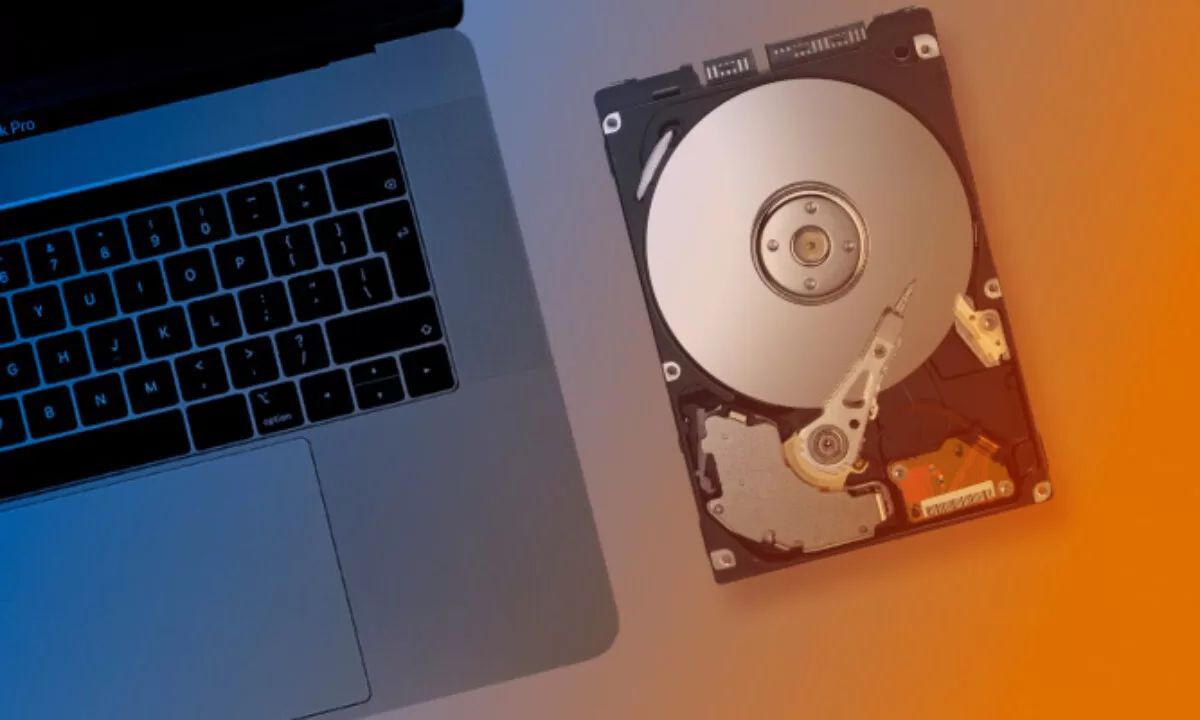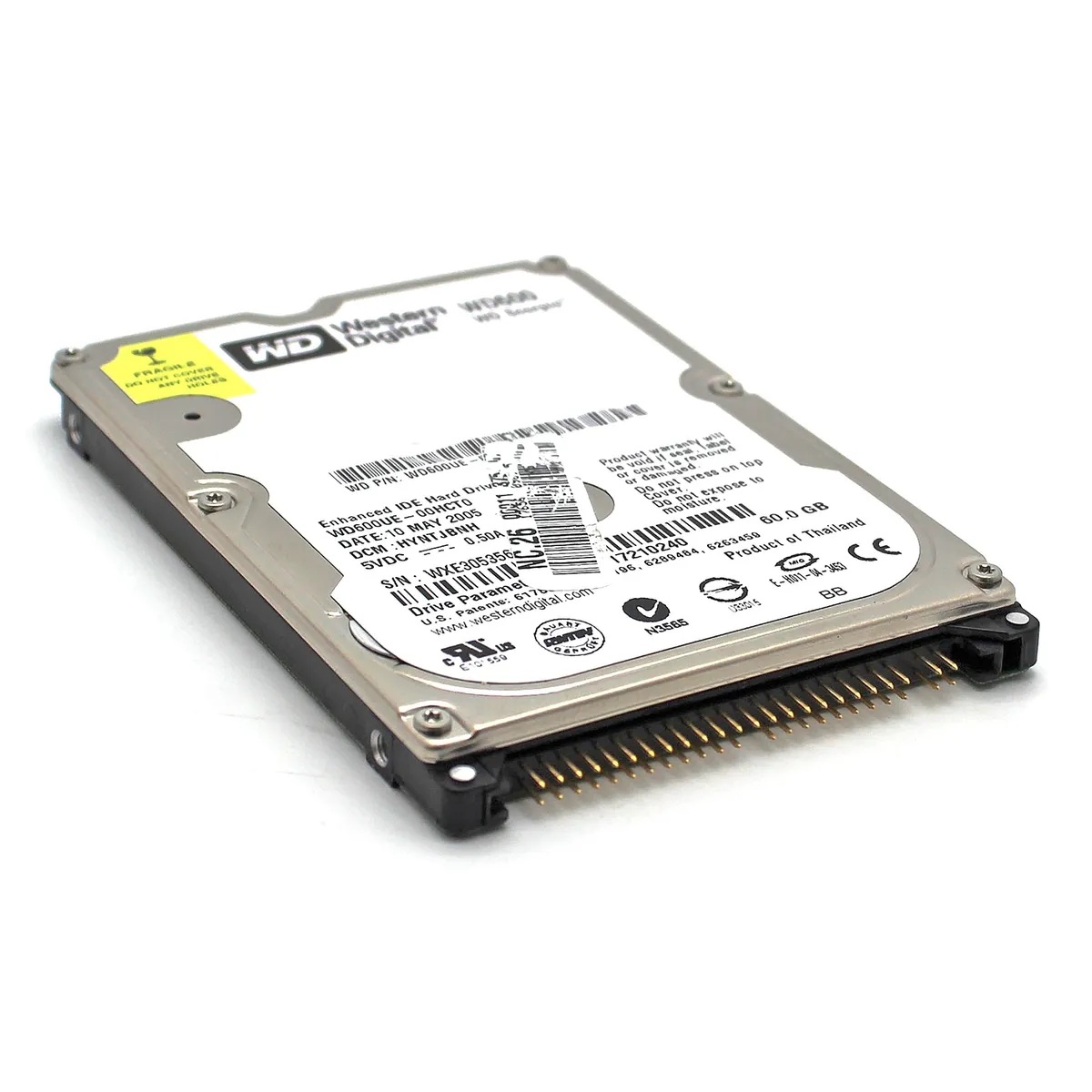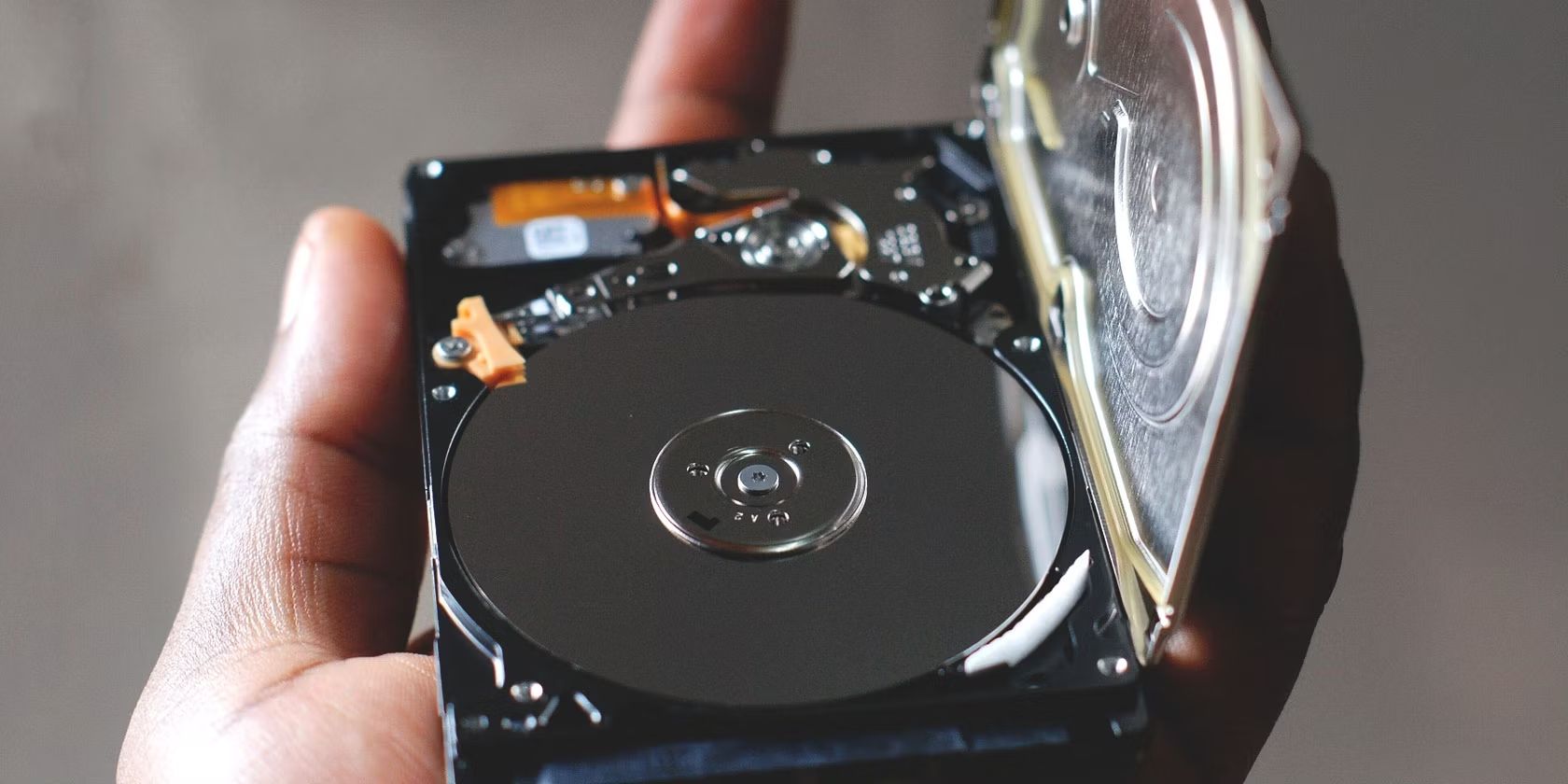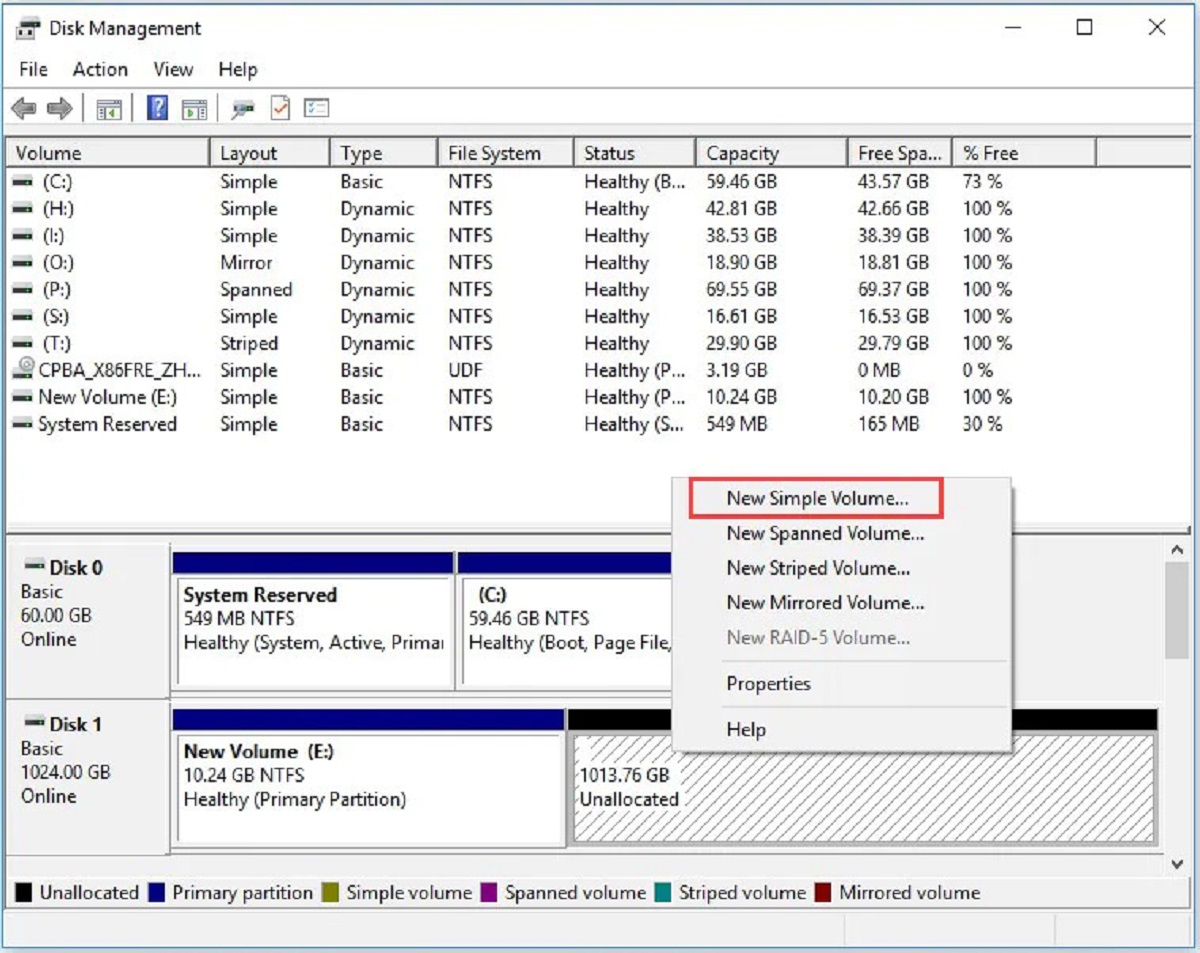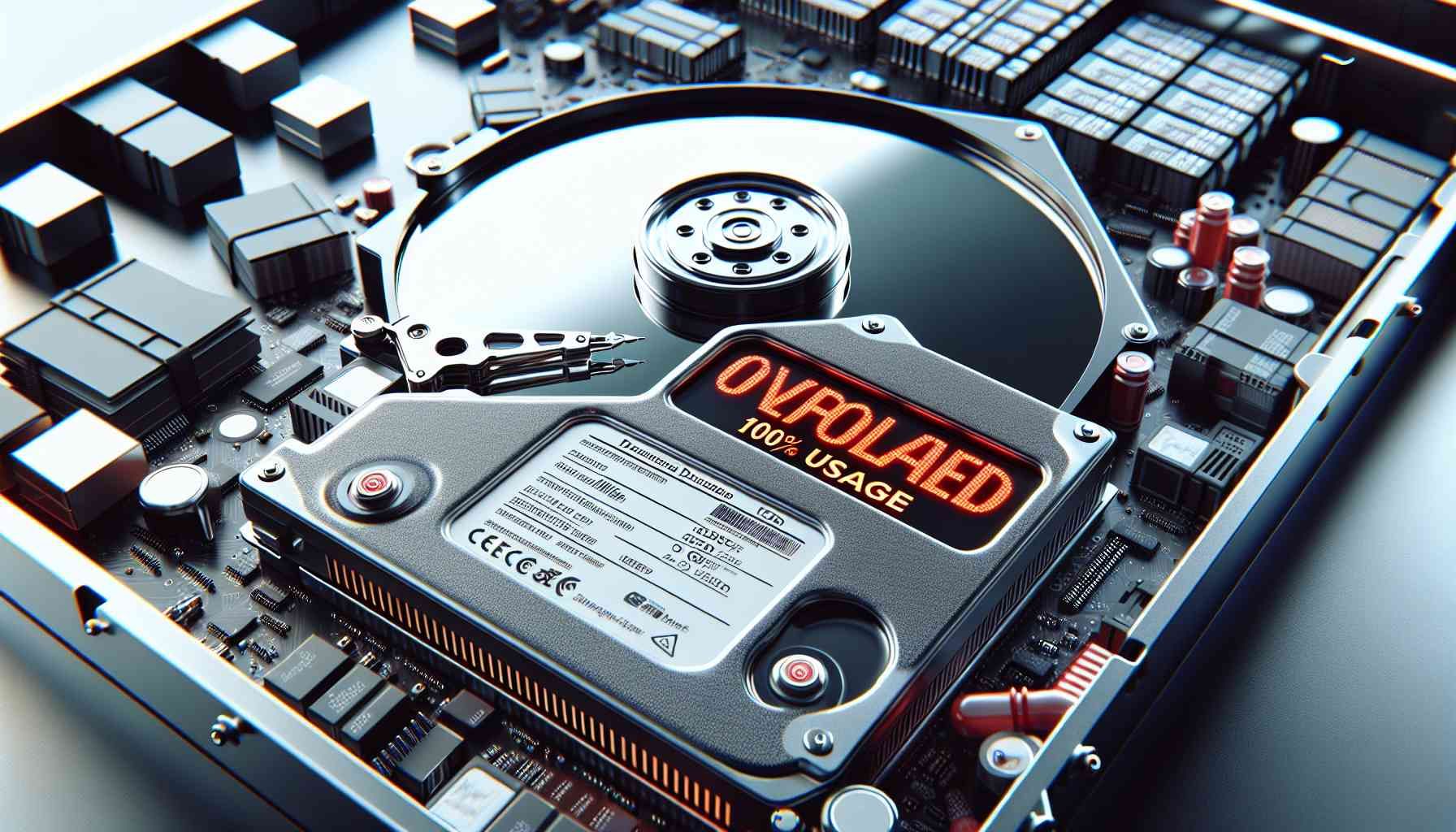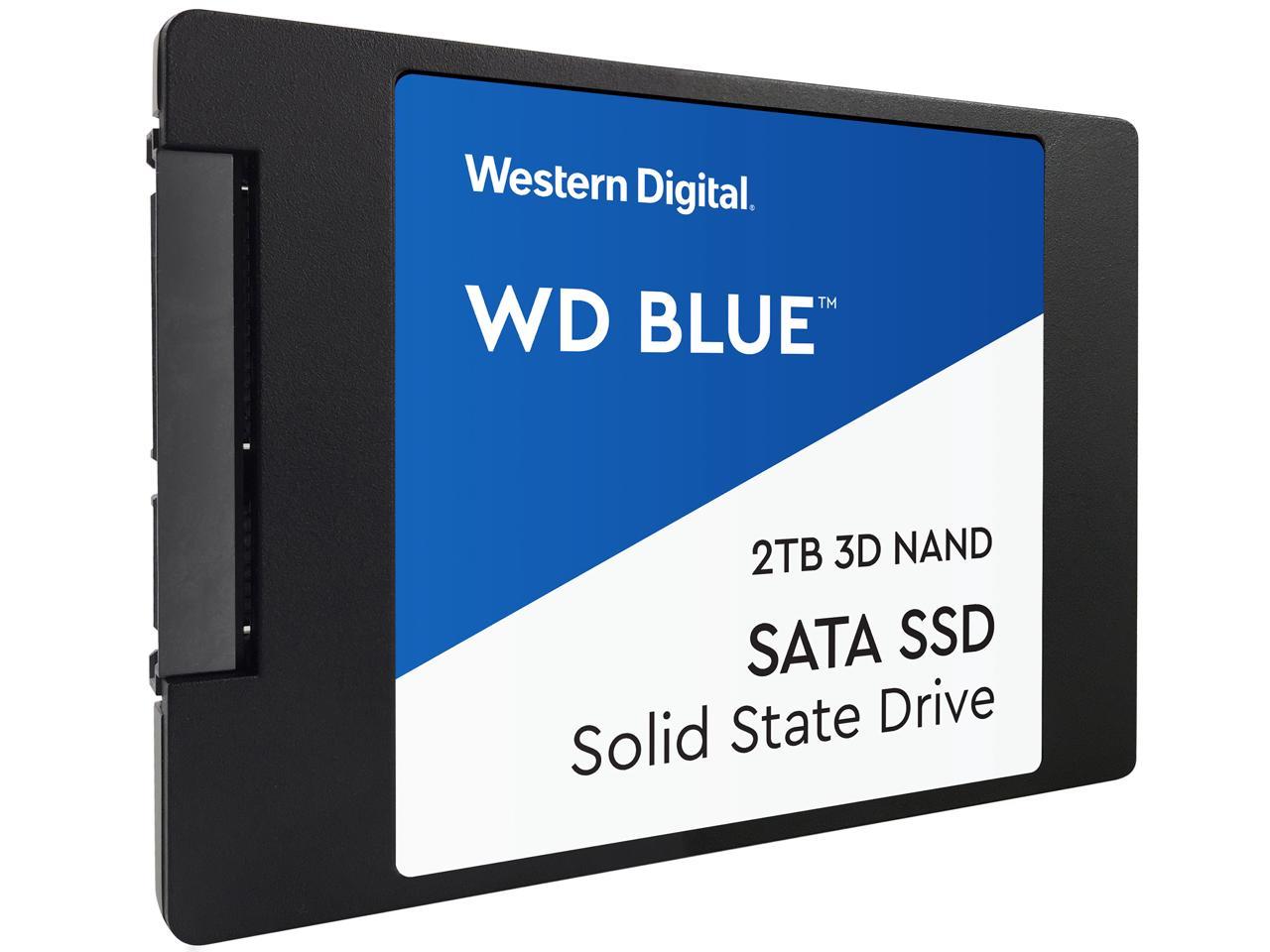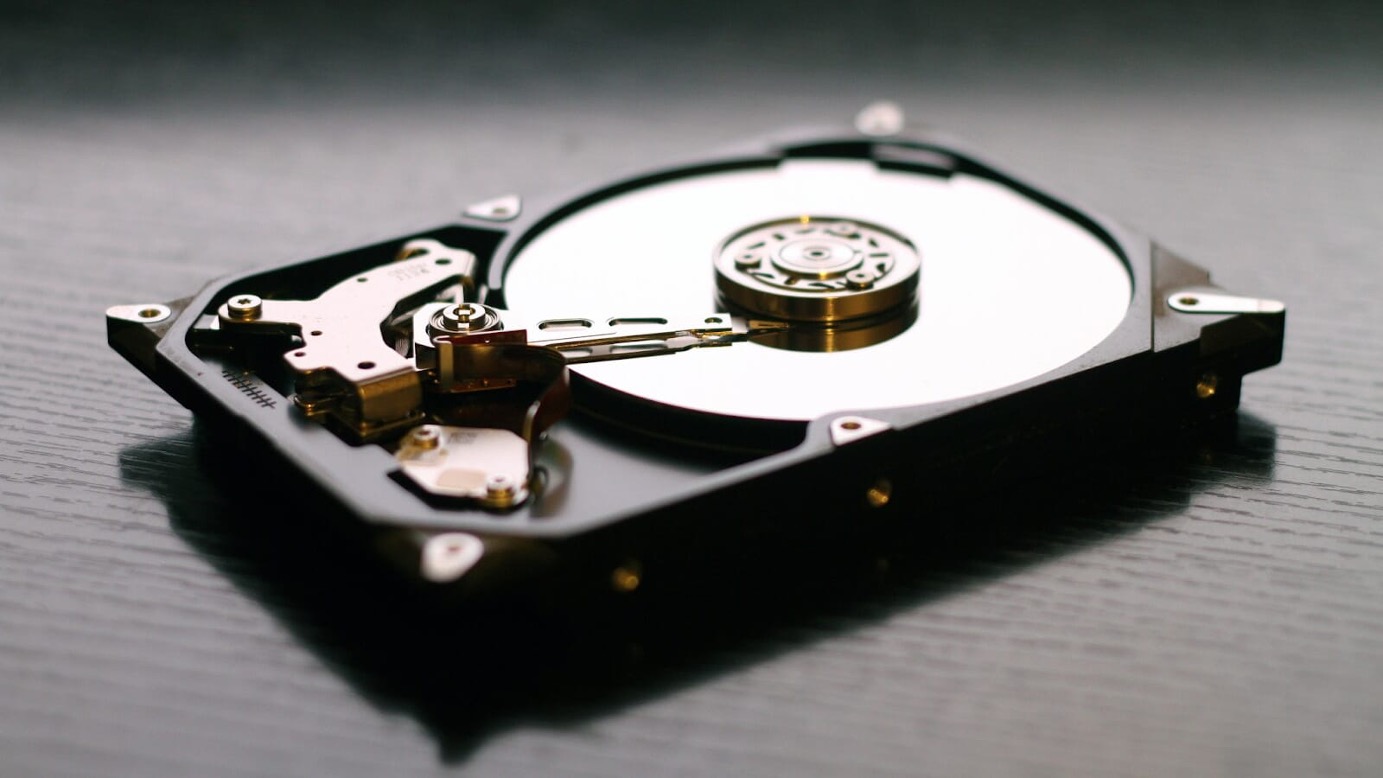Introduction
A hard disk drive (HDD) is an essential component of any computer system, responsible for storing and retrieving digital data. It is a non-volatile storage device that uses magnetic storage to store and retrieve data using one or more rigid rapidly rotating disks coated with magnetic material. HDDs have been the go-to choice for storing large volumes of data for many years, offering reliability, cost-effectiveness, and adequate performance for a wide range of applications.
In recent years, solid-state drives (SSDs) have gained popularity due to their faster read and write speeds, compact form factor, and lower power consumption. However, HDDs continue to dominate the market, particularly in high-capacity storage needs, where cost per gigabyte is a crucial factor.
This article will delve into the different factors that contribute to making a good hard disk drive and the reasons why HDDs are still widely used and preferred by many users.
Speed
When it comes to hard disk drives, speed is a critical factor that affects the overall performance of a computer system. The speed of an HDD is determined by two main components: the rotational speed (measured in revolutions per minute, or RPM) and the data transfer rate.
Rotational speed refers to how fast the internal disks of the HDD spin. The faster the rotation, the quicker the drive can access the data stored on it. Common rotational speeds for consumer-grade HDDs range from 5,400 RPM to 7,200 RPM, while high-performance drives can reach speeds of 10,000 RPM or more. The faster the rotational speed, the lower the latency and the faster the drive can search and retrieve data.
The data transfer rate, on the other hand, measures how quickly data can be read from or written to the disk. It is influenced by several factors, including the drive’s interface (such as SATA or SAS), cache size, and the drive’s internal hardware design.
While HDDs have improved in speed over the years, they still lag behind solid-state drives (SSDs) in terms of read and write speeds. SSDs utilize flash memory technology, allowing for much faster data transfer rates and near-instant access times. However, HDDs still provide sufficient speeds for most everyday computing tasks, such as web browsing, document editing, and multimedia playback.
It is important to consider your specific needs when evaluating the speed of an HDD. If you require fast data transfer and low latency, particularly for tasks like gaming or video editing, then an SSD may be a better choice. However, if you need a large amount of storage at an affordable price and do not require lightning-fast speed, an HDD will still serve you well.
Capacity
One of the major advantages of hard disk drives (HDDs) over solid-state drives (SSDs) is their superior capacity for storing data. HDDs are available in a wide range of storage capacities, from a few hundred gigabytes to multiple terabytes, making them ideal for users who need to store large amounts of data, such as media files, documents, and software installations.
The capacity of an HDD is determined by the number of platters and the data density on each platter. As technology has advanced, HDD manufacturers have been able to increase the amount of data that can be stored on each platter, leading to higher capacity drives.
It is important to consider your storage needs when choosing the capacity of an HDD. If you mainly use your computer for basic tasks like web browsing and document editing, a lower capacity drive may be sufficient. However, if you work with large media files, such as videos or high-resolution photos, or if you need to store a large number of files and applications, a higher capacity drive will be more suitable.
It is worth noting that while HDDs offer larger capacities than SSDs, the cost per gigabyte is generally higher for SSDs. So if you require a large amount of storage on a budget, an HDD is likely the better choice.
When selecting the capacity of an HDD, it is also important to consider future needs. Data storage requirements tend to increase over time, especially with the growing popularity of high-definition media and file sizes. It is better to have more storage than you currently need to avoid running out of space in the future.
In summary, the capacity of an HDD is a crucial factor to consider when choosing a drive. Whether you need a few hundred gigabytes or multiple terabytes of storage space, HDDs offer a wide range of capacities to meet your needs without breaking the bank.
Reliability
Reliability is a key factor to consider when choosing a hard disk drive (HDD) for your computer system. The reliability of an HDD refers to its ability to consistently perform without failures or data loss over an extended period of time.
HDDs have been around for decades and have evolved to become highly reliable storage solutions. Manufacturers employ various technologies and quality control measures to ensure that HDDs operate smoothly and reliably. One important aspect of reliability is the mean time between failures (MTBF), which represents the average time an HDD can operate without encountering a failure.
Modern HDDs offer MTBF ratings in the hundreds of thousands of hours, providing a level of reliability that is suitable for most consumer and business applications. Additionally, HDDs often come with warranty periods ranging from one to five years, giving users peace of mind regarding their long-term reliability.
It is worth noting that despite their overall reliability, HDDs can still experience failures due to various factors. Mechanical components, such as the spinning platters and the read/write heads, are vulnerable to wear and tear over time. External factors, such as extreme temperature fluctuations or physical shocks, can also impact the performance and reliability of an HDD.
To mitigate these risks, it is essential to handle and operate HDDs with care. Avoid subjecting them to sudden movements or impacts, ensure proper ventilation to prevent overheating, and periodically back up your data to minimize the impact of a potential failure.
Overall, HDDs are considered reliable storage devices that can withstand normal usage conditions. However, it is important to be aware of their limitations and take necessary precautions to ensure the safety and integrity of your data.
Power Consumption
Power consumption is an important consideration when it comes to hard disk drives (HDDs), especially in scenarios where energy efficiency is a priority. The power consumed by an HDD directly impacts the overall power usage of a computer system and can have implications for factors such as battery life in laptops and the environmental footprint of a system.
HDDs generally consume more power than solid-state drives (SSDs) due to their mechanical nature. The spinning platters and moving parts require energy to operate, resulting in higher power consumption. However, it is worth noting that advancements in technology have led to more energy-efficient HDD models.
The power consumption of an HDD can vary depending on several factors, including the rotational speed, data transfer rate, and workload. Higher rotational speeds typically result in higher power consumption as more energy is required to spin the platters. Additionally, intense read and write operations can increase power usage.
It is important to choose an HDD that aligns with your power consumption requirements. If you prioritize energy efficiency, you may consider opting for lower power consumption models or even SSDs, which are known for their energy-efficient operation.
By carefully managing power settings within your computer system and implementing power-saving features, you can optimize the power consumption of HDDs. For example, setting idle times for the HDD to spin down when not in use can significantly reduce power consumption while maintaining adequate performance.
Overall, while HDDs generally have higher power consumption compared to their SSD counterparts, advancements in technology have led to more energy-efficient models. By selecting HDDs with lower power consumption, utilizing power-saving features, and optimizing power settings, you can strike a balance between storage capacity and energy efficiency in your computer system.
Noise and Vibration
Noise and vibration are important factors to consider when evaluating a hard disk drive (HDD) for your computer system. While HDDs are known to produce some level of noise and vibration during their operation, advancements in technology have led to improvements in reducing these factors.
Noise emitted by an HDD is primarily caused by the mechanical components, such as the spinning platters and moving read/write heads. As the platters rotate, they generate a faint humming or spinning noise. The read/write heads may also produce clicking sounds as they position themselves on the platters. However, modern HDDs are designed to minimize these noises and operate quietly compared to their older counterparts.
Vibration is another byproduct of HDD operation. The spinning platters and moving read/write heads generate small amounts of vibration, which can be transferred to the drive chassis and the computer system as a whole. Excessive vibration can potentially impact the overall performance and lifespan of other components, such as the motherboard and other storage devices.
Manufacturers have implemented various technologies to reduce noise and vibration in HDDs. One such technology is the use of fluid dynamic bearings (FDBs) instead of traditional ball bearings. FDBs help reduce friction and minimize the noise and vibration generated by the rotating disks.
Another technique used to combat noise and vibration is the implementation of shock-absorbing mechanisms. These mechanisms help dampen the effects of external shocks or movements, reducing the vibration transmitted through the drive chassis.
It is worth noting that the noise and vibration levels of an HDD can vary from model to model. Some HDDs are designed with reduced noise as a priority, making them more suitable for applications that require low noise levels, such as media centers or quiet workstations.
Overall, while HDDs may produce some level of noise and vibration during operation, modern drives have significantly improved in this regard. By choosing HDDs with improved noise reduction features and implementing proper installation techniques, such as using rubber grommets or anti-vibration mounts, you can ensure a quiet and stable computing environment.
Interface
The interface is a crucial aspect to consider when selecting a hard disk drive (HDD) for your computer system. The interface determines how the HDD connects to the motherboard and affects factors such as data transfer speeds and compatibility.
There are various types of interfaces used in HDDs, with Serial ATA (SATA) being the most common interface used in consumer-grade drives. SATA interfaces, including SATA I, II, and III, offer high-speed data transfer rates and are widely supported by modern motherboards.
SATA III is the most advanced version and provides a maximum data transfer rate of 6 gigabits per second (Gbps). However, it is important to note that the actual data transfer speeds achieved can be influenced by other factors, such as the drive’s rotational speed and internal hardware design.
For users requiring even faster data transfer speeds, there are other interface options available. For example, Serial Attached SCSI (SAS) is a high-performance interface commonly used in enterprise-level drives. SAS drives offer higher bandwidth and better reliability than SATA drives, making them ideal for demanding applications that require high-speed data access.
It is essential to ensure compatibility between the HDD interface and the motherboard or system you intend to use. Most modern motherboards and systems support SATA interfaces, making them a convenient choice for most users. However, for specific scenarios that require specialized interfaces such as SAS, it is important to verify compatibility to ensure proper functionality.
When choosing an HDD interface, it is important to consider the intended usage and the performance requirements of your system. If you need high-speed data transfer and top performance, selecting an HDD with a compatible and faster interface, such as SAS, may be necessary. However, for typical consumer needs, SATA interfaces provide sufficient performance and compatibility.
Overall, the interface is a vital consideration when selecting an HDD, as it determines the compatibility and performance of the drive within your system. By choosing an appropriate interface, you can ensure optimal data transfer speeds and seamless integration of the HDD into your computer system.
Drive Health Monitoring
Drive health monitoring is an important feature to consider when choosing a hard disk drive (HDD) for your computer system. It involves the ability of the drive to monitor its own health and provide notifications or warnings about potential issues or failures.
Modern HDDs often come equipped with built-in technologies that enable drive health monitoring. One commonly used technology is Self-Monitoring, Analysis, and Reporting Technology (S.M.A.R.T). S.M.A.R.T. is a monitoring system that tracks various parameters of the HDD, such as temperature, spin-up time, and the number of bad sectors. It then generates alerts or notifications if any of these parameters exceed certain thresholds, indicating a potential problem.
Drive health monitoring allows users to be proactive about potential drive failures. By receiving warnings or notifications in advance, users can take appropriate actions, such as backing up their data and replacing the failing drive before it leads to data loss or system downtime.
Drive health monitoring software, usually provided by the HDD manufacturer or third-party applications, allows users to view the current status of their HDD and monitor its health over time. It provides insights into various parameters and helps users make informed decisions regarding the maintenance and replacement of their drives.
It is important to note that while drive health monitoring is a valuable feature, it should not be solely relied upon for data protection. Regular backups of critical data should always be performed to mitigate the risk of data loss in the event of a drive failure.
Overall, drive health monitoring is a useful feature that enables users to proactively monitor and address potential issues with their HDDs. By being aware of the health status of their drives, users can take appropriate actions to ensure data safety and minimize the impact of drive failures on their computer systems.
Price
Price is an important factor to consider when choosing a hard disk drive (HDD) for your computer system. HDDs are known for their cost-effectiveness when it comes to storage capacity, making them a popular choice for users with large storage needs on a limited budget.
Compared to solid-state drives (SSDs), HDDs offer a lower cost per gigabyte of storage. This affordability makes HDDs an attractive option for users who require large amounts of storage space, such as for media files, documents, or backups.
The price of an HDD depends on several factors, including the brand, capacity, and technology used in the drive. Higher-capacity HDDs generally come at a higher price point compared to lower-capacity drives. Drives with advanced technologies, such as higher rotational speeds or specialized interfaces, may also come at a higher cost.
It is important to consider your storage needs and budget when selecting an HDD. If you require a large amount of storage space and cost is a significant consideration, an HDD will offer a more affordable solution compared to SSDs.
However, it is worth noting that if performance is a priority, SSDs may be a better choice, as they offer faster read and write speeds compared to HDDs. SSDs are particularly beneficial for tasks that require quick access to data, such as gaming or video editing.
When comparing prices, it is essential to consider the overall value of the drive. Factors such as warranty length, reliability, and the reputation of the manufacturer should also be taken into account. It is often worth investing a little more in a reputable brand that offers a longer warranty period and better reliability to ensure a satisfactory long-term performance.
Ultimately, the price of an HDD will depend on your specific needs, budget, and priorities. A thorough evaluation of your storage requirements, performance expectations, and the overall value of the drive will help you make an informed decision.
Conclusion
When it comes to selecting a hard disk drive (HDD) for your computer system, there are several important factors to consider. Speed, capacity, reliability, power consumption, noise and vibration, interface, drive health monitoring, and price all play significant roles in determining the suitability of an HDD for your specific needs.
HDDs continue to be widely used and preferred by many users due to their cost-effectiveness, providing larger storage capacities at a lower cost per gigabyte compared to solid-state drives (SSDs). While SSDs offer faster read and write speeds, HDDs are still a reliable and suitable choice for everyday computing tasks, such as web browsing, document editing, and multimedia playback.
When evaluating an HDD, it is important to consider the rotational speed, data transfer rate, and overall speed of the drive to ensure it meets your performance requirements. The capacity of the drive should align with your storage needs, both present and future, to avoid running out of space and needing to upgrade prematurely.
Reliability is another critical factor to consider, and modern HDDs offer advanced technologies and quality control measures to provide reliable performance. Power consumption, noise and vibration levels, and drive health monitoring are essential considerations to ensure optimal functionality and longevity of the drive.
Finally, the price of an HDD should be evaluated in conjunction with the features, capacity, and overall value it provides. Determining your budget and weighing it against the specific requirements of your computer system will help you make an informed decision.
In conclusion, hard disk drives (HDDs) continue to offer a cost-effective and reliable storage solution for a wide range of applications. By considering the factors outlined in this article, you can choose an HDD that meets your storage needs, performance expectations, and budget, providing you with the necessary storage capacity for your data-intensive tasks.







